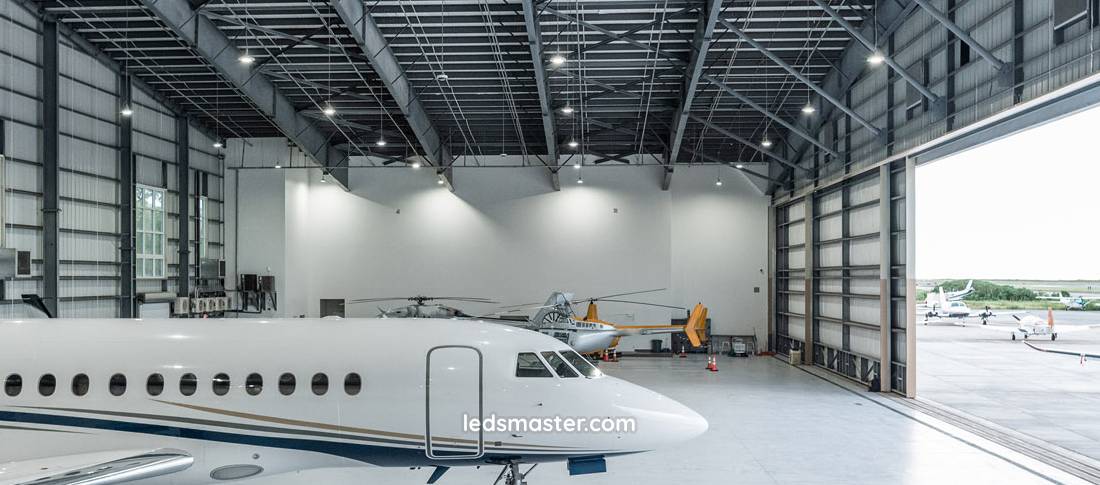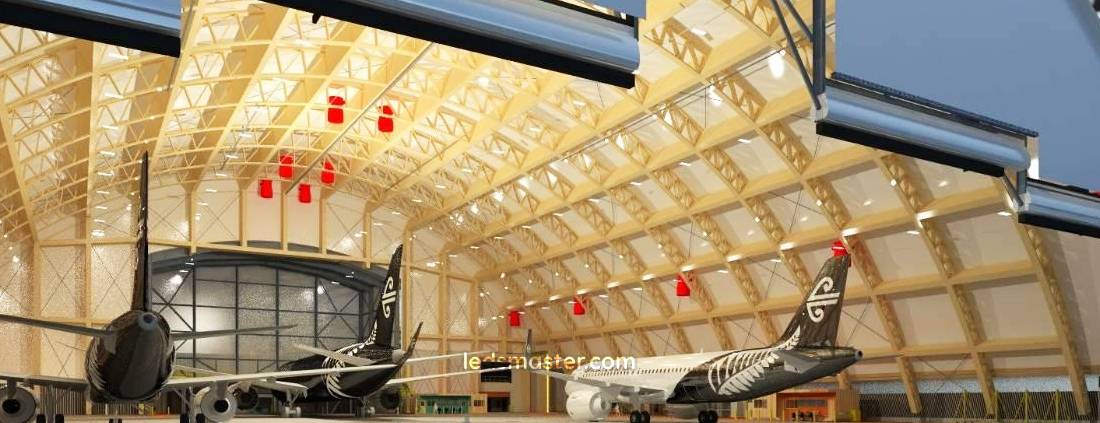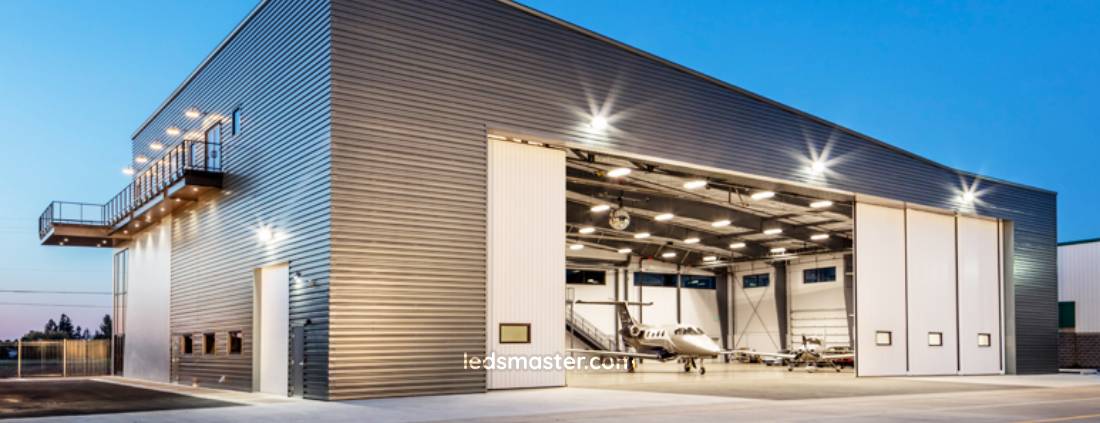Think about what it takes to light up such a massive space. What factors drive the cost of hangar lighting, and how can you make sure you’re getting the best value over time? In this article, we’ll dive into the costs and benefits, helping you make smart, cost-effective decisions for your hangar lighting setup. Ready to discover how to optimize your investment? Let’s get started!
Get your complimentary lighting design today
When determining the cost of hangar lighting, several factors come into play that not only influence the initial investment but also affect long-term operational expenses. In this article, we’ll explore the factors influencing hangar lighting costs, long-term cost considerations, and government incentives and rebates. We’ll also discuss how choosing the right lighting solutions can impact energy efficiency and maintenance requirements.
| Cost Factor | Description | Impact on Total Cost | Approximate Cost Range |
|---|---|---|---|
| Energy Efficiency & Operational Costs | The energy consumption of lighting systems (e.g., LED vs. Metal Halide). LED lights reduce electricity costs over time. | High (LEDs significantly lower long-term costs) | $0.10 – $0.20 per kWh saved (up to 50% energy savings) |
| Installation Costs | Costs associated with setting up the lighting system, including labor, wiring, and fixture mounting. | Medium to High (varies with hangar size and complexity) | $5,000 – $25,000 depending on size and complexity |
| Lighting Technology | Choice of lighting (LED, Fluorescent, Metal Halide) affects initial investment and operational expenses. | High (LEDs cost more upfront, but save over time) | $300 – $1,500 per fixture (LED) |
| Maintenance Costs | Regular upkeep and replacement of bulbs. LED lights have lower maintenance compared to traditional options. | Medium to Low (LEDs require less maintenance) | $100 – $300 per year (LED); $500+ per year (traditional) |
| Lighting Control Systems | Cost of smart systems like motion sensors or timers, which improve efficiency and reduce energy use. | Medium (saves costs in long-term energy use) | $500 – $5,000 depending on complexity |
| Durability & Environmental Factors | Additional costs for weather-resistant, durable lights to withstand harsh conditions in hangars. | Medium to High (especially in extreme environments) | $500 – $3,000 per fixture (depending on durability requirements) |
| Government Incentives & Rebates | Financial incentives or rebates available for energy-efficient lighting installations. | Lowers Overall Costs (can reduce initial expense) | Varies, up to 20% – 30% off total costs |
| Customization & Flexibility | Costs of customized lighting solutions for specific hangar tasks (e.g., high-CRI lighting for inspections). | High (depending on specific requirements) | $1,000 – $5,000 additional for custom setups |
| Utility Company Rebates | Potential discounts or rebates from utility companies for upgrading to energy-efficient lighting. | Lowers Operational Costs (reduces electricity bills) | Typically 10% – 25% rebate on energy-efficient upgrades |
| Fixture Placement & Accessibility | Costs related to placing lights in hard-to-reach areas, which may require specialized equipment for installation or maintenance. | Medium (affects installation and upkeep) | $1,000 – $3,500 for specialized equipment or labor |
Table of Contents
ToggleThe size and layout of the hangar directly impact the number of lighting fixtures needed. Larger hangars, which accommodate more aircraft or bigger planes, require more lighting fixtures to ensure adequate illumination. Additionally, the layout—whether it’s open or partitioned—can also affect how light needs to be distributed. Partitioned sections may require specialized lighting solutions, adding to the cost.
The type of lighting technology chosen significantly influences both the upfront cost and the long-term expenses of operating a hangar. Traditional metal halide or fluorescent lights may have a lower initial cost but consume more energy and have a shorter lifespan compared to LED lighting. LEDs, although more expensive initially, provide significant savings over time due to their energy efficiency, longer lifespan, and lower maintenance requirements.
Installation is another major factor in determining the overall cost of hangar lighting. The complexity of the installation process depends on the size of the facility, the existing infrastructure, and the type of lighting chosen. In some cases, retrofitting an existing hangar with energy-efficient lighting can incur additional costs due to the need for upgrades to electrical systems or structural changes.
Energy-efficient lighting systems may come with a higher initial cost, but their long-term savings in terms of reduced energy consumption and maintenance can offset these expenses. Lights with higher energy efficiency ratings typically consume less electricity and have longer lifespans, reducing both energy bills and replacement costs over time.
Lighting control systems, such as motion sensors, dimmers, and timers, allow for the automated management of lighting in hangars. Although incorporating these systems can increase the initial investment, they provide significant savings in the long run by reducing energy consumption when lighting is not needed. The cost of these systems can vary based on the sophistication of the technology and integration with other facility systems.

Energy consumption is one of the most significant long-term expenses associated with hangar lighting. While traditional lighting options like metal halide lamps are less expensive upfront, they are far less energy-efficient compared to modern LED systems. LEDs consume a fraction of the energy and can lead to savings of up to 50% on energy bills, especially in large hangar environments where lighting is required for extended periods.
The maintenance requirements for different types of lighting vary. Traditional lighting solutions such as halogen and fluorescent bulbs require more frequent replacement and upkeep. This increases labor costs and downtime, which can be a significant concern in hangars where consistent lighting is essential for safety and operational efficiency. LED lighting, on the other hand, offers a much longer lifespan, sometimes lasting up to 50,000 hours, reducing the need for regular maintenance and replacement.
Lighting in hangars must withstand harsh conditions, such as temperature fluctuations, exposure to chemicals, and high humidity levels. Investing in durable, weather-resistant lighting solutions can increase upfront costs but save money in the long run by reducing the frequency of replacements and repairs. LEDs are especially durable and are less susceptible to damage from environmental factors, making them a reliable choice for hangars.
Sustainability is a growing concern in many industries, including aviation. Energy-efficient lighting solutions like LEDs reduce greenhouse gas emissions and overall energy consumption. While eco-friendly lighting may come at a higher price initially, it can help companies meet environmental regulations, reduce carbon footprints, and potentially qualify for sustainability certifications that can provide financial or reputational benefits.

Many governments, both at the federal and local levels, offer incentives and rebates for businesses that adopt energy-efficient lighting systems. These programs aim to reduce energy consumption and encourage businesses to transition to more sustainable practices. Rebates can significantly offset the initial costs of installing LED or other energy-efficient lighting solutions, making them more financially feasible for hangar owners.
In addition to direct rebates, hangar owners may also be eligible for tax credits when investing in energy-efficient lighting systems. These tax incentives can vary by region and the type of lighting system installed, so it’s essential for hangar operators to research and take advantage of these opportunities. By reducing taxable income, tax credits can further offset the overall cost of upgrading to modern lighting technologies.
Some utility companies offer rebates or discounted rates for businesses that upgrade to energy-efficient lighting. These programs are designed to reduce overall energy consumption in the region and encourage businesses to invest in greener technologies. Contacting the local utility provider can help hangar operators learn more about potential savings opportunities through these rebate programs.

Achieving uniform lighting coverage in a hangar is crucial for ensuring the safety and efficiency of operations. Poorly designed lighting can lead to dark spots or overly bright areas, which can compromise visibility and safety. A well-designed lighting plan that ensures uniform distribution of light may require more fixtures or specific types of lighting, affecting the overall cost. However, optimizing for uniformity reduces operational risks and improves work conditions.
Hangars that require specialized lighting for particular tasks, such as aircraft painting or maintenance, may need customized lighting solutions. For example, areas where precise visual inspection is required may benefit from high-CRI (Color Rendering Index) lighting to ensure accurate color representation. Customizing lighting for specific needs can increase costs, but it also enhances operational efficiency and safety.
The height at which lighting fixtures are installed also impacts the cost of the system. High-ceilinged hangars, common in the aviation industry, require more powerful lighting fixtures with wider beam angles to ensure adequate coverage. Additionally, placing fixtures at significant heights may increase installation and maintenance costs, as specialized equipment is required to access and service these lights.
The cost of hangar lighting is influenced by multiple factors, including the size of the hangar, the type of lighting technology used, and the long-term operational considerations such as energy consumption and maintenance requirements. Although LED lighting systems may come with a higher upfront cost, their energy efficiency, durability, and long lifespan make them the most cost-effective option in the long term.
Additionally, hangar owners should explore government incentives and rebates, which can significantly reduce the initial investment in energy-efficient lighting solutions. By considering both immediate costs and long-term savings, operators can make informed decisions that not only meet their budgetary constraints but also enhance the efficiency and sustainability of their operations. Ultimately, investing in the right lighting system for a hangar is a decision that will pay dividends over time, both in financial savings and improved operational performance.